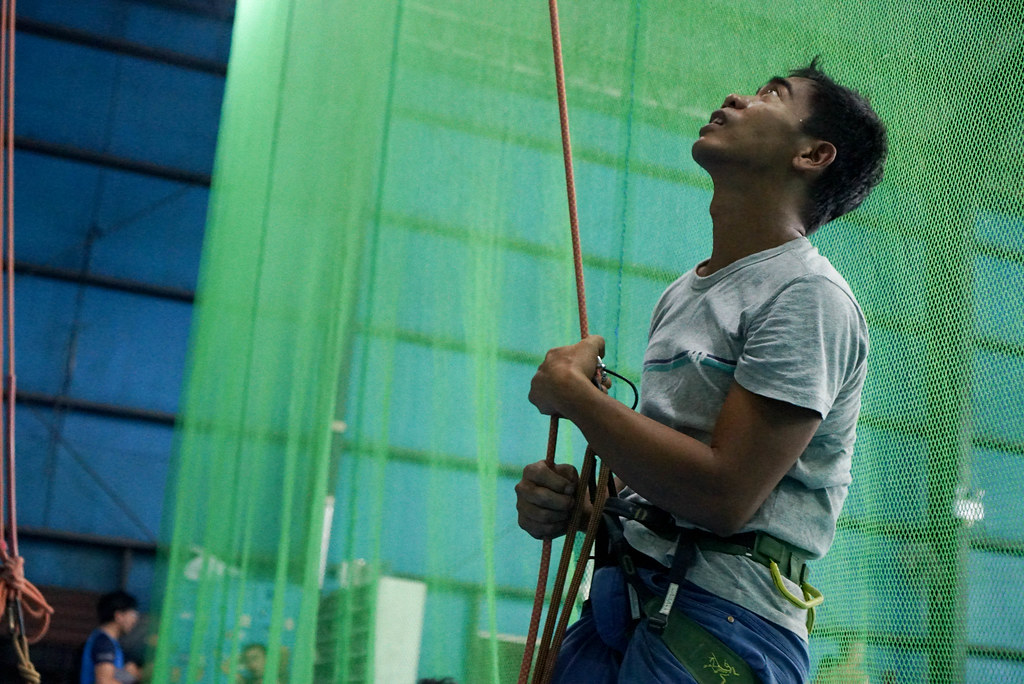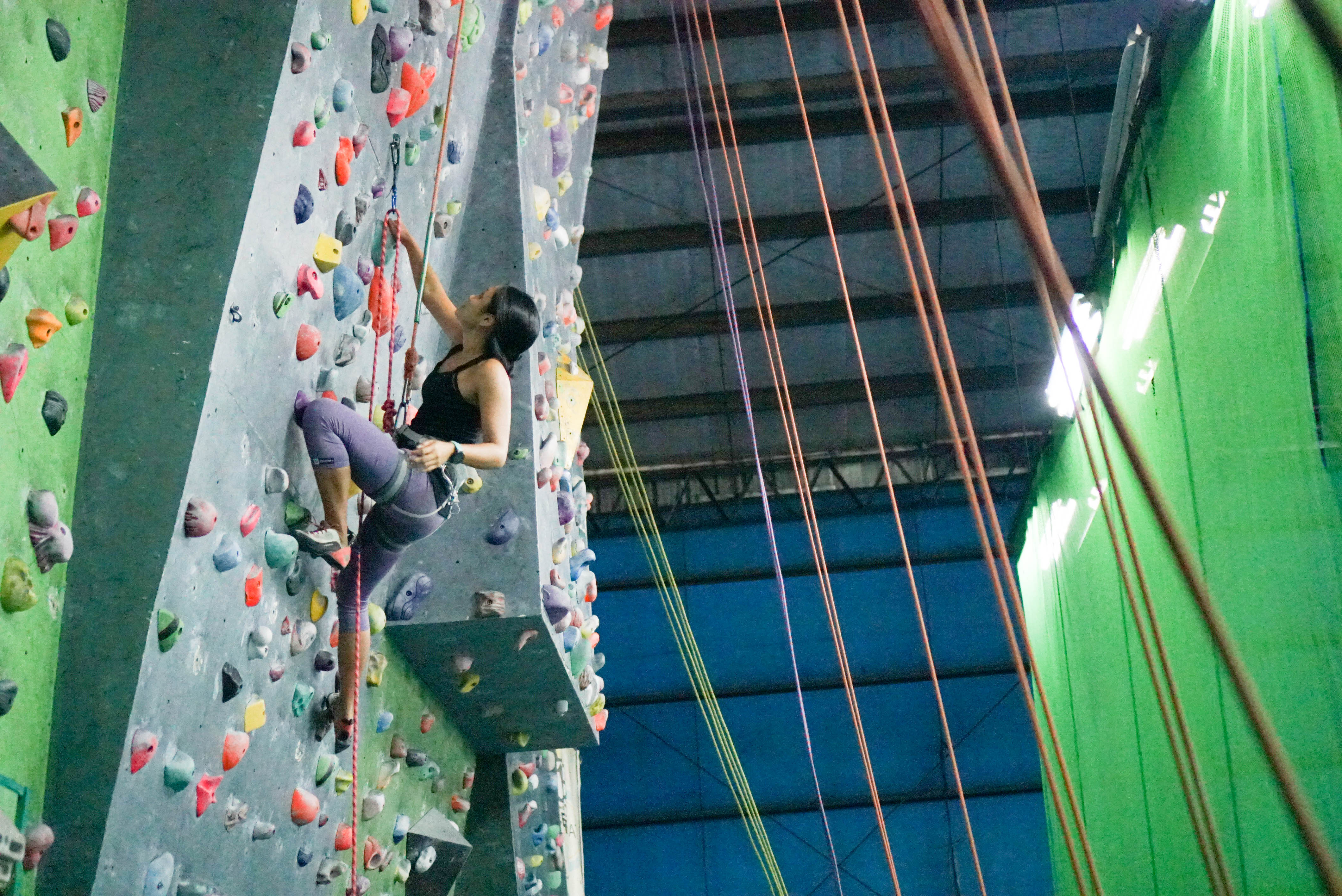
Learning How To Lead Climb
What is Lead Climbing?
When you are lead climbing, you leave the ground with no protection in the rock. As you ascend your route, you clip quickdraws into the bolts that follow the line of the route and then clip the rope into the quickdraws. The rope is secured to you on your harness, and is also running through your partner’s belay device on the ground. In the event of a fall, your partner will arrest the rope in the belay device and you will fall two times the length of the rope between you and the closest clip below you then the amount that the rope stretches.
Source: http://www.climbingtechniques.org/sport-leading-basics.html
I have always found lead climbing to be intimidating. Since I started climbing more regularly, I always find myself looking up in awe at climbers who would just go at it on the lead wall. I’ve always wanted to know for myself just how physically and mentally demanding it is.
I asked Aldwin, a friend of ours with years of climbing experience on his back, one afternoon for an intro session. Not really to get into the whole thing yet, but just to know if it’s for me. Spoiler: I feel that it is!
Cali and I met up with him at Power Up Centro Atletico and quickly got down to business.
What do you need to get started with lead climbing?
- Level 1 climbing experience. You’ll need to know how to tie into your harness with a figure-8 knot, for one. If you’re in Manila, you may inquire at Power Up or Climb Central Manila for instructions on how to take a Level 1 course.
- Really be comfortable on the wall. I would’t say lead climbing is not for newbies, but it requires a certain level of comfort with different holds. It is not something for first timers – that I can say surely.
- Gear? I wouldn’t suggest buying gear before learning it. At the minimum, have your own harness and climbing shoes. Your gym is sure to have the rest of the lead climbing equipment needed.
Again, I’m no expert, so it’s best to consult your indoor climbing gym trainer to know exactly what you need.
Is it really scary?
Well, yes. And no.
The big falls. There will be periods when you are unclipped to the carabiner. Spotters should be on the ground as you start ascending, but there still is going to be some height to cover should you fall before your first clip. This also means that as you go up and climb away from the last carabiner, the height difference becomes bigger as well.
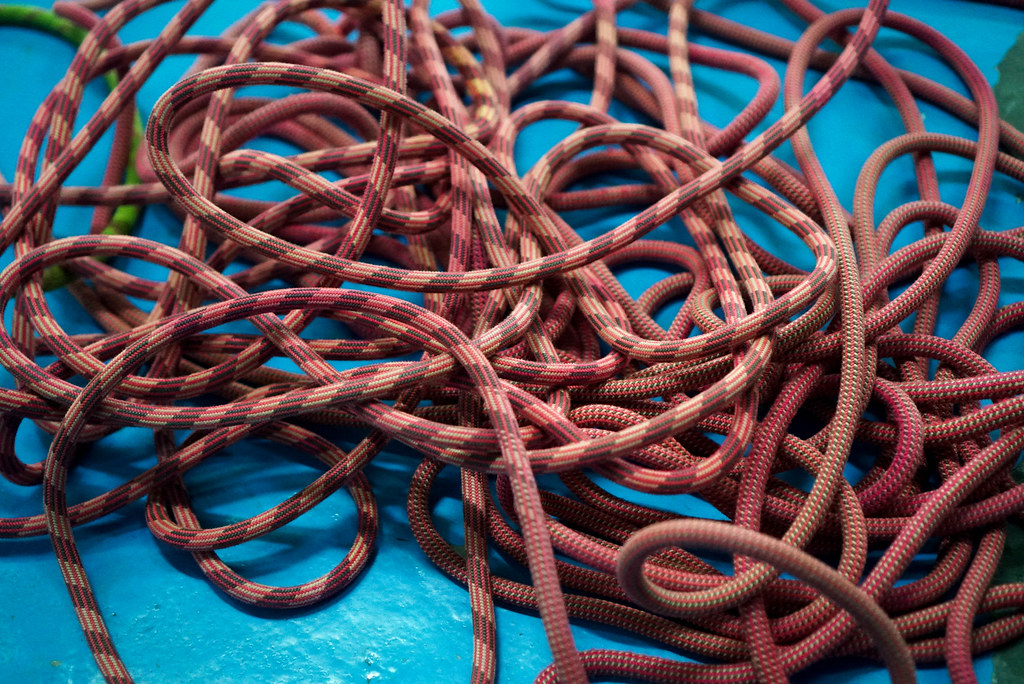
The need for strength and technique. As you climb, you have to clip yourself to a carabiner with one hand. This means that one arm is clipping while the other arm (and both feet, if done well!) is supporting your body weight.

The mental stress. I’ve only had one lead climbing session. A lot of the panic I’ve experienced while on the wall came from being unrelaxed. One needs to remain and regain one’s calm when things get rough up in the wall. Here is my belayer and coach, Aldwin, reminding me to stay calm.
But something can be done to remedy all these scary things!
- Keep doing it. I know this is overused advice, but repetition really works. Clipping in with one hand is hard, especially when you’re doing it on your weaker side. It can be learned and mastered. Trust in your muscle memory. Try climbing once a week. Then twice. Then thrice.
- Watch and learn. The little amount of climbing knowledge I know now I’ve only learned by friends’ shared experiences. You’ll be surprised how several seemingly unproductive nights of hanging out and watching them lead climb will actually help you when it’s your turn on the wall.
- Don’t be afraid to ask. One thing you should have is the curiosity. Always ask why: why do you have to clip this way, and not the other way? Why should your belayer stand way over there and not close to me? Asking questions might just save your from a few mistakes or even injuries.
- Don’t be afraid to be wrong. This is the advice I tell myself all the time. Of course you’re going to commit mistakes. Of course you’re going to fall. A lot. Shake the pump out and try again. The most skilled climbers now were once in the same shoes.
Picture time!

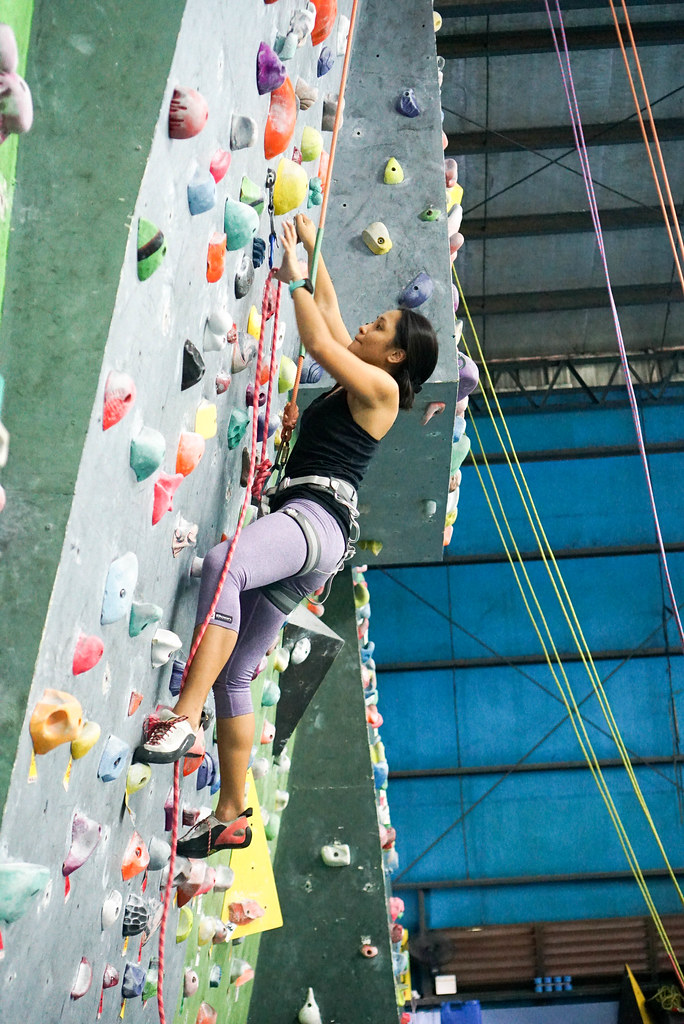
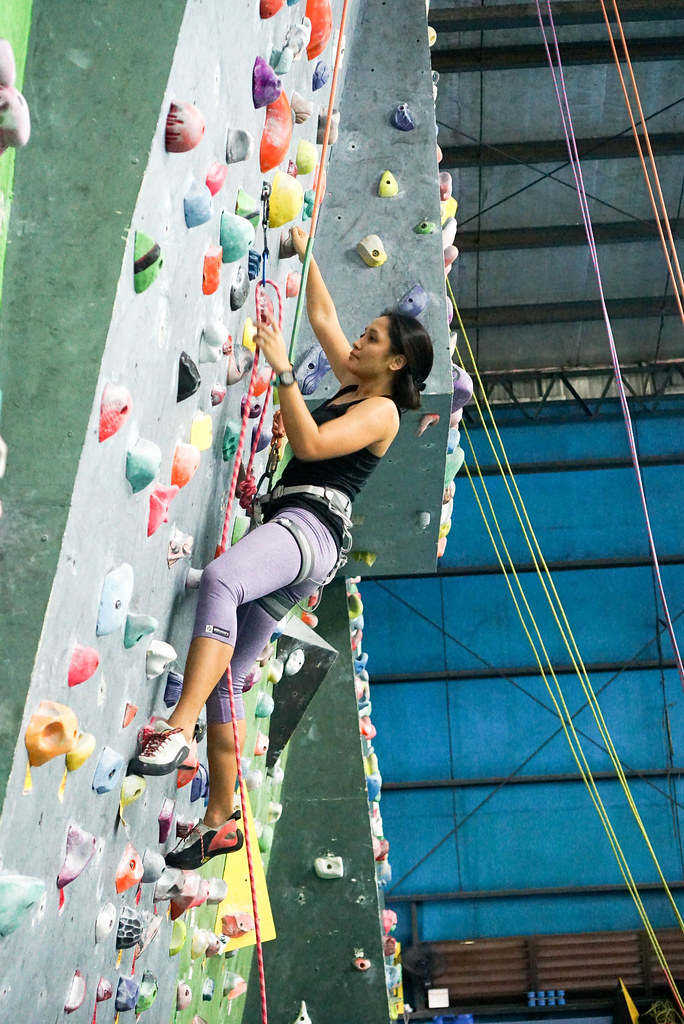
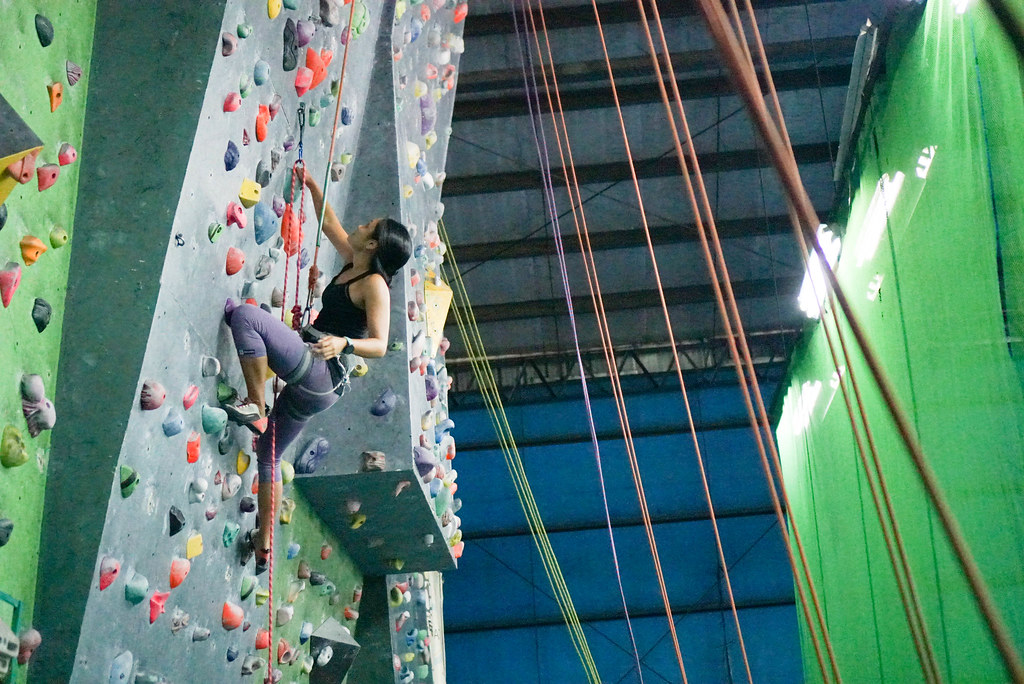
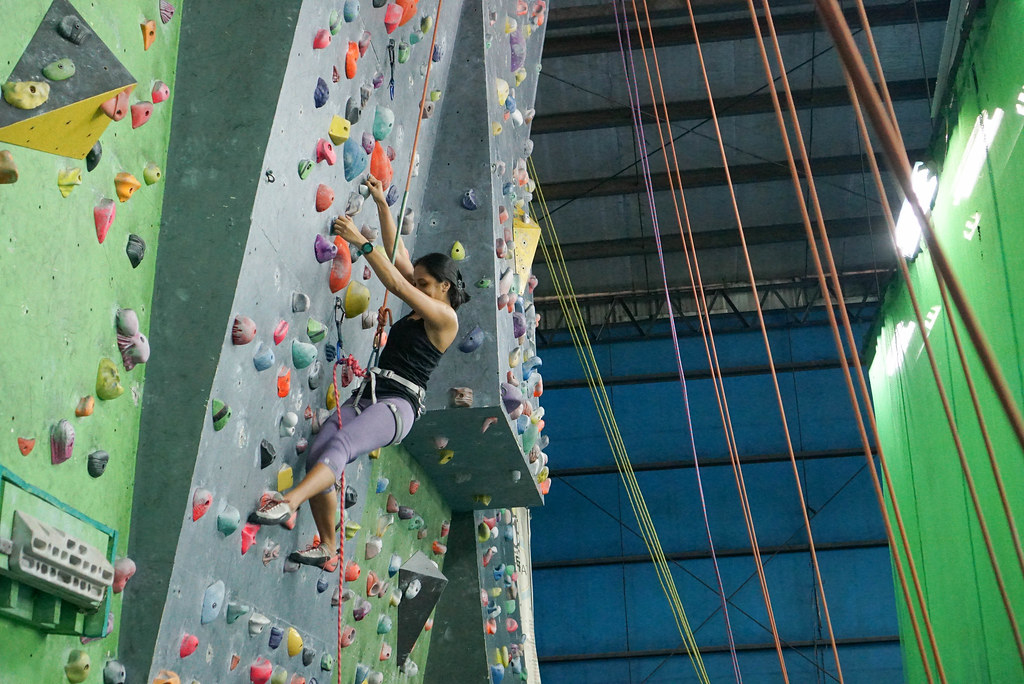
Have you done lead climbing? Do you remember your first time?
References:
https://medium.com/knotclimbing/how-to-pass-your-lead-climbing-test-40945a82122a
